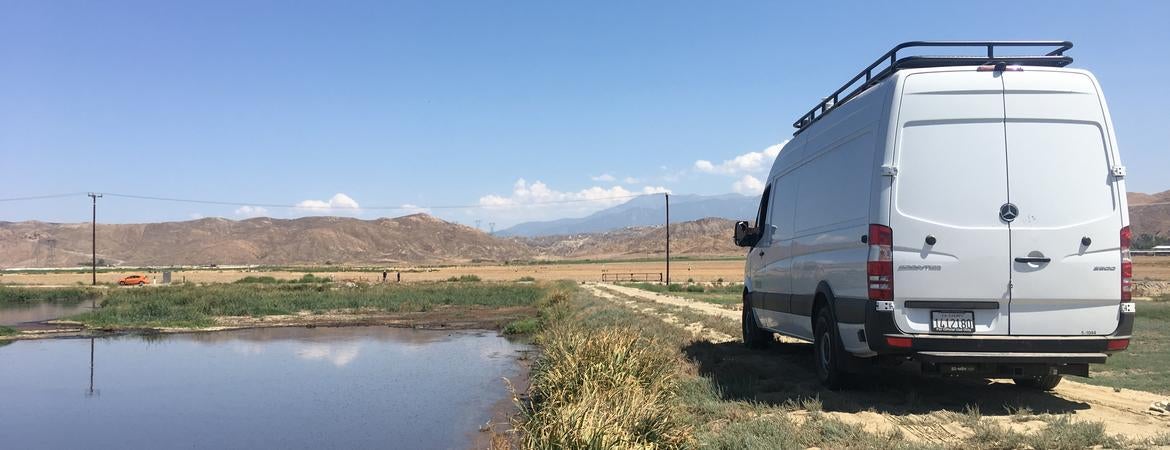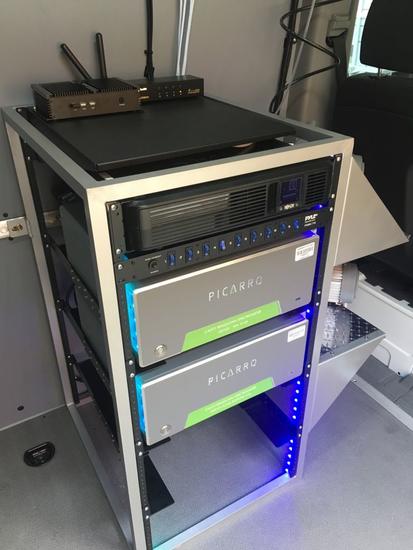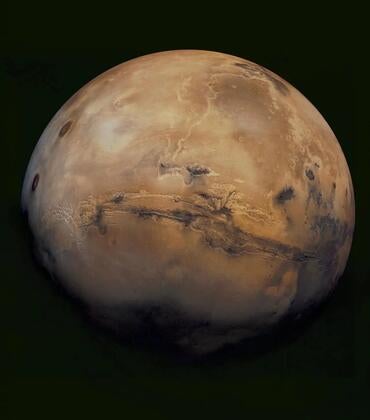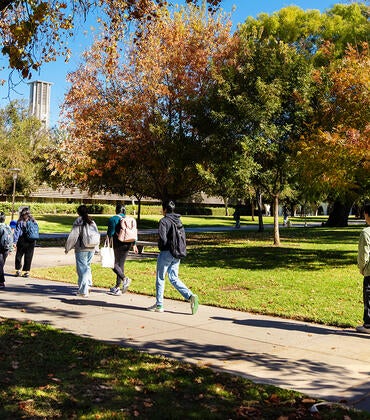
Two UC Riverside professors are taking to the road to pinpoint sources of air pollution across California.
They’ll be traveling in the university’s new Mobile Isotope Laboratory, a Mercedes Benz transport van fitted with a suite of instruments that can measure the flux of greenhouse gases in the environment in real time. The scientists leading the project are Francesca Hopkins, an assistant professor of climate science and sustainability in the Department of Environmental Sciences, and Marilyn Fogel, the Wilbur H. Mayhew Endowed Professor of Geo-Ecology in the Department of Earth Sciences.
By pumping the surrounding air into the laser-based sensor system, the researchers can measure the amount of methane, ethane, carbon dioxide, water vapor, and nitrous oxide in the atmosphere. They can also identify the naturally occurring stable isotopes of individual elements — carbon, nitrogen, and oxygen — in the gases, which enables them to determine where the emissions came from and whether they originated through human activities or natural processes.
The van is equipped with a diesel generator and an inverter, which power the laser-based machines and air conditioning needed to work in remote locations such as UC’s Natural Reserve System sites.
“By analyzing air samples in real time while the vehicle is in motion, we can identify pollution hotspots and further study them to learn the sources and concentrations of the emissions,” said Fogel, who is director of UCR’s Environmental Dynamics and GeoEcology (EDGE) Institute. “The instruments in the mobile lab will enable us to take a comprehensive look at current greenhouse gas emissions across California, which will provide a baseline that the state can use as it works to reduce air pollution caused by transportation, agriculture, and industry.”
Since the mobile lab’s rollout earlier this month, researchers have conducted emissions testing at dairies in Southern California, and plan to use it in Boyd Deep Canyon and at the Salton Sea this fall.
Valerie Carranza, a graduate student in Hopkins’ research group, said the mobile laboratory makes data collection much easier. “Before we had access to the mobile lab, it was challenging to make these kinds of measurements in the field because the laser instruments require power and cooling,” Carranza said. “The mobile lab has vastly increased the number of locations we can visit and the amount of measurements we can make.”
Francesca Hopkins, principal investigator of a Lab Fees grant from the University of California Office of the President, and her group have been testing the mobile van this summer and have an ambitious schedule for fall. Darrel Jenerette, professor of landscape ecology, and Peter Homyak assistant professor of environmental sciences, hope to use the mobile lab to work on their National Science Foundation-funded project on “hot” agriculture in the Imperial Valley, where temperatures can reach 110 degrees Fahrenheit.
The community is invited to tour the mobile lab and learn how the instruments work from 4-6 p.m. on Sept. 6 at the Geology Building Courtyard. The tour will be hosted by members of the research team and Isaac Lino, a junior specialist engineer who assembled the lab. The lab is also on Instagram @ucrlimeavocado, which stands for UCR “Laboratory for Isotope Measurements in the Environment” (LIME)/Analysis for On-road Capture of Atmospheric Data and Observations (AVOCADO).
Members of the media who are interested in touring the van should contact sarah.nightingale@ucr.edu




